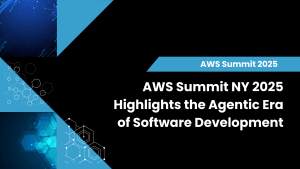In this episode of the SecurityANGLE, David Linthicum and I are joined by fellow analyst, engineer, and member of theCUBE Collective community, Jo Peterson, and for a conversation exploring the transformative nature of cloud and AI together, what’s now, and what’s ahead.
Watch the full episode of The Transformative Nature of Cloud and AI Together: What’s Now, What’s Ahead here, or stream it wherever you listen to podcasts:
Cloud and AI — Two Forces Interacting, Spurring Transformation
We began our conversation discussing the Fujiwhara effect, which is what happens when two hurricanes pass close enough one another to begin to interact, and it sometimes feels like this is happening with AI and cloud. More specifically, we are seeing AI accelerating the adoption of cloud, and also enhancing the hyperscalers’ platforms that it’s built on.
The Global Cloud Computing Market
According to research from AI Multiple, the global cloud computing market continues to grow and is expected to reach an estimated ~$680 billion U.S. dollars in 2024. That number represents a 30% jump in two years. Much of that growth is being fueled by AI exploration. Hyperscalers are reaping many benefits here, as the exploration and application of AI through access to the tools developed by hyperscalers (think chatbots, virtual agents, etc.) provide a reliable, familiar assist.
State of AI in the Cloud and the Allure of Managed AI Services
Wiz’s State of AI in the Cloud Report 2024 shows that more than 70% of the organizations are using managed AI and that adoption rate rivals the adoption of managed Kubernetes, at over 80% adoption. Our conversation explored why we’re seeing so much adoption, and so rapidly.
It is not unusual to see the embracing of managed AI services, as it eliminates the needs to hire expensive (and often hard to find and hire) data scientists, AI engineers, and/or consultants who can knit all of this together. There’s a lot of data moving, a lot of data hygiene work needed, and a level of expertise that not all organizations and IT teams have. Working with a managed AI services vendor is an attractive option.
Why the Cloud Wins for AI Convenience
We are very much still in the early stages, so it’s natural there are discussions about where it’s all going to happen: On-prem? In the cloud? The reality is that the cloud is the most convenient place to build AI systems because the ecosystem is already there. You can choose the engines you need, the toolsets, databases, and the number of systems you need. With about 40% of enterprise data already on the cloud, that can be easily leveraged as training data. It’s quick and easy to be up and running and quickly experimenting and realizing the benefits of AI — that’s a value prop that’s difficult to ignore. We believe we are going to see this embracing of cloud for some time to come.
That same report from WIZ shared a not surprising stat in the heated battle among the hyperscalers for AI dominance: Azure AI, which includes Azure Open AI, is leading the way with 39% of organizations using the service. Looking at a 4-month slice of time in 2023, the number of deployments rose 228%. We discussed the fact that Microsoft adroitly jumped into the deep end on the AI front with its OpenAI investment, and the cloud giant is very much reaping the benefits.
The Financial Pressure the Demand for AI puts on Cloud Infrastructure
It’s estimated that the hyperscalers have already invested hundreds of billions on AI innovation. But cloud infrastructure, or the “plumbing of the cloud” and specifically the massive investments needed to expand and retrofit data centers and deploy GPUs and TPUs is not in any way insignificant.
We touched on the build vs. buy mentality that’s at play here, and the reality that it’s attractive to be able to use some of the AI-powered functionality that already exists in hyperscaler environments, which is likely driving that rapid adoption. All the tools are already there, which is one of the most compelling reasons to use cloud for AI. The providers, the services they offer, the different options for different toolsets, training data, hygiene tools — all the things that are needed for AI are already there for us to leverage in any way we want. Cloud is the most convenient way to do this. And while you can certainly opt for doing this on-prem, and it will likely be somewhat cheaper, you’ve still got many complexitites to navigate when opting for that path. Conversely, when you’re trying to move fast and get something done quickly, building on a single public cloud is a compelling option.
The Cloud Security Alliance (CSA)
Our conversation explored when we might see the impact of those investments in earnings reports — and it likely won’t be long. Pivoting to security for a moment, we discussed the formation of the Cloud Security Alliance in December 2023, where Amazon, Google, Microsoft, and OpenAI joined forces with the Cloud Security Alliance on an AI Safety initiative with a goal of an AI framework to be released within a year.
AI Security and Regulation Ahead
AI security is something we talk a lot about here, and this conversation was no different. We explored the novel security vulnerabilities that need to be considered as it relates to AI, and how they differ from other cybersecurity threats. We also shared thoughts on how far way we might be from true AI regulation from the U.S. Government that some teeth, similar to the EU’s AI Act.
It was a fantastic conversation all the way around, and one we’ll be having for the foreseeable future. Be sure and find and follow us to stay in the know, and if you have questions or topics you would like for us to tackle, you know where to find us.
Image source: Pixabay
Jo Peterson on LinkedIn | on Twitter/X



